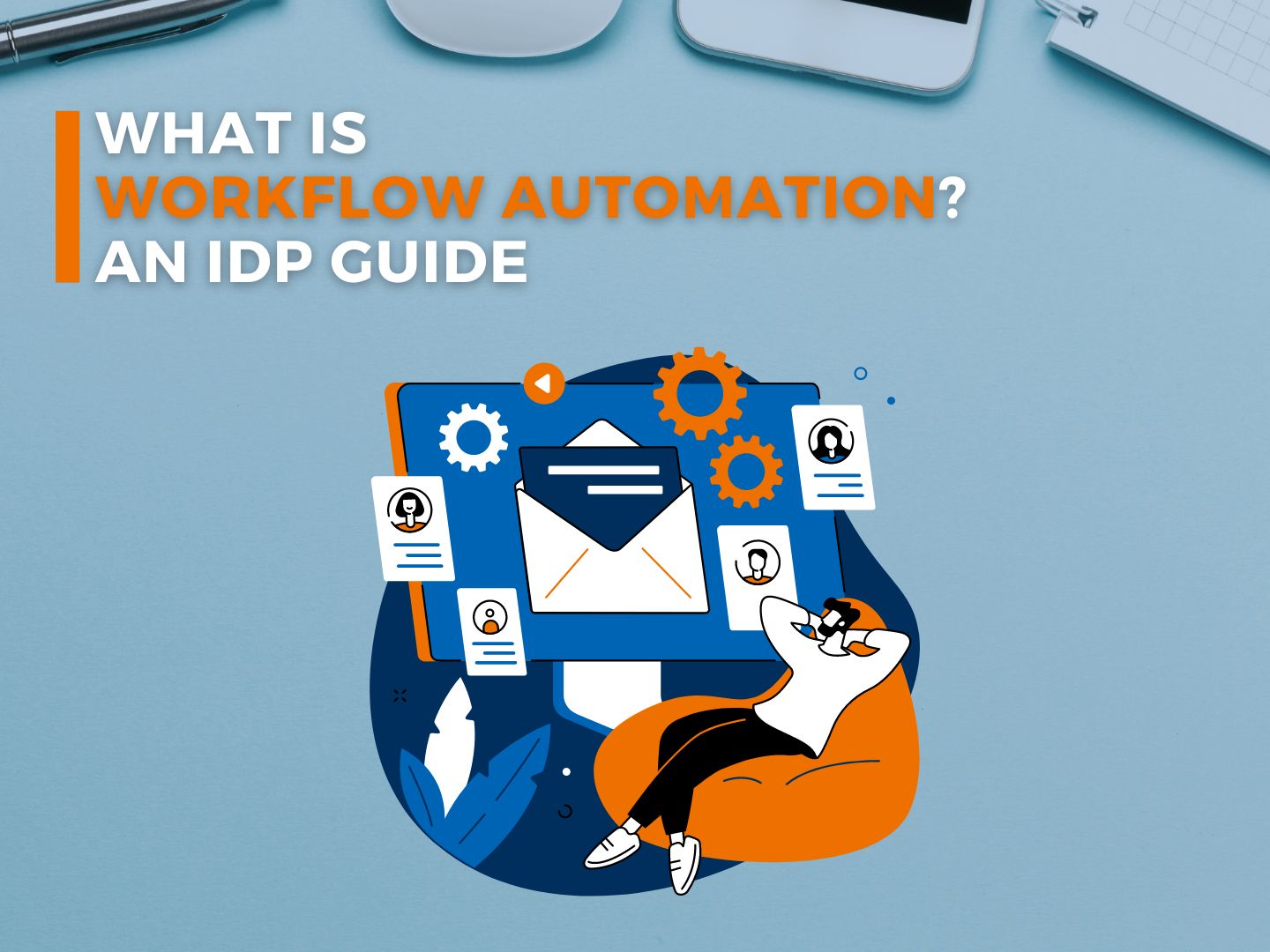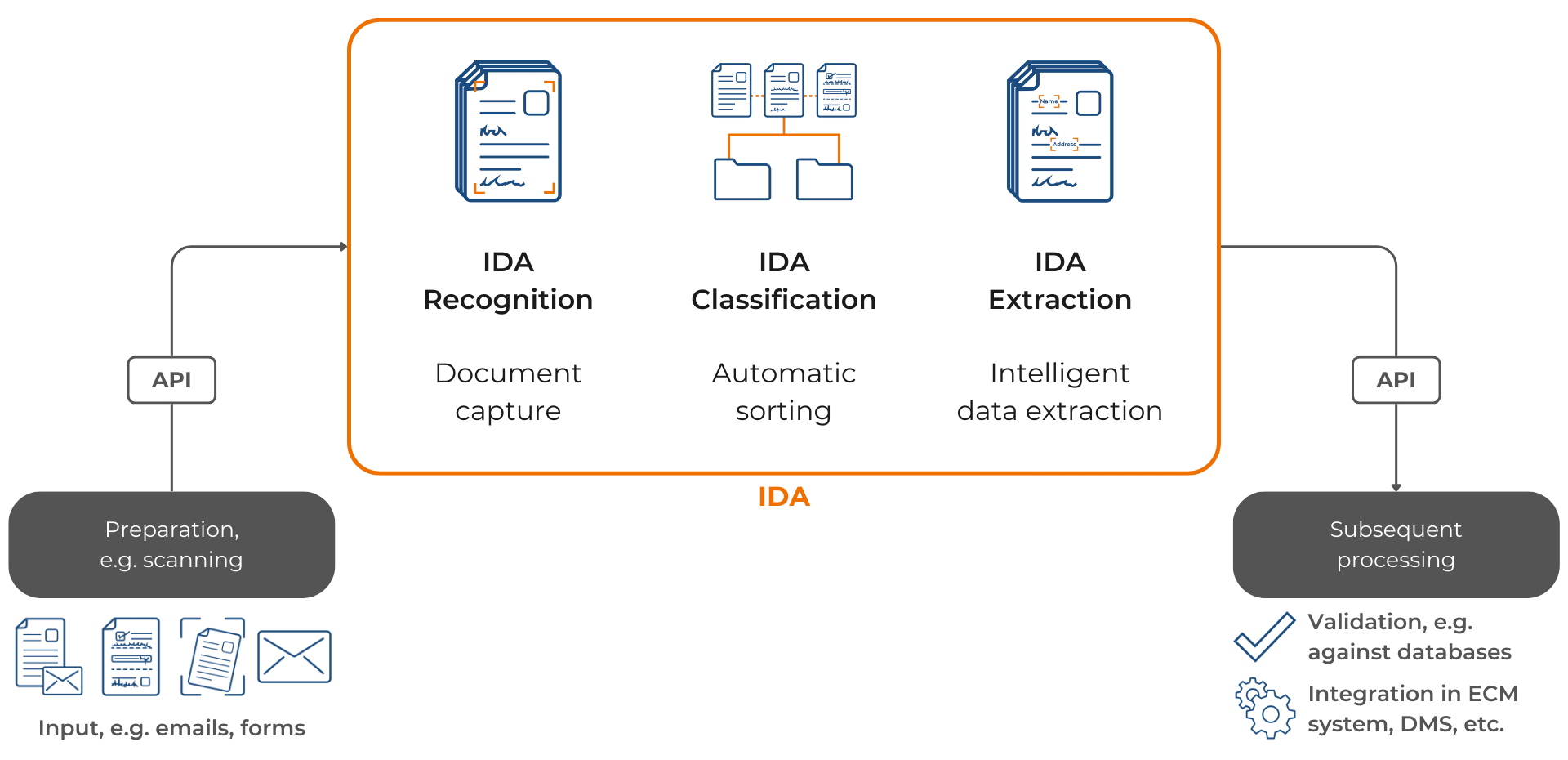Workflow Automation – An IDP Guide
Revolutionize Your Business Processes

- 1
- 2
- 3
- 4
- 5
- 6
- 7
In today’s rapidly changing business world, where time is money, enhancing the efficiency of workflows is becoming increasingly important. Key technologies such as Artificial Intelligence (AI), automation, and Intelligent Document Processing (IDP) are at the forefront to help businesses streamline their processes, boost productivity, and ultimately strengthen their market position.
What is Workflow Automation?
Workflow automation refers to the technique of automating manual and time-consuming business processes using software. This results in tasks that previously required manual intervention now being handled by digital systems. This can encompass anything from simple tasks like forwarding emails to more complex business processes like invoice processing.
The Value of IDP in Workflow Automation
IDP plays a crucial role in automation by enabling machines to understand and process documents and the information contained within them. Unlike traditional, rule-based approaches, IDP leverages AI and machine learning to recognize complex patterns, learn, and adapt to changes. This increases accuracy, reduces processing time, and opens new opportunities for automating and optimizing workflows.
Workflow Automation with IDA

For effective workflow automation, it is crucial that documents are available digitally, such as in PDF, PNG, JPG, etc. In this context, the software suite for Intelligent Document Analysis (IDA) plays a key role. IDA is responsible for document capture (IDA Recognition), classification of document types (IDA Classification), and the extraction of specific data from these documents (IDA Extraction). The processed data or documents resulting from IDA are then ready for further processing steps. These subsequent steps typically include the verification of the extracted data against existing databases and the integration of this information into Enterprise Content Management (ECM) systems, Document Management Systems (DMS), and other applicable platforms. The entire process significantly improves efficiency and precision in the data processing workflow.
Applications of IDP and Automation
IDP is used in various industries to improve the efficiency and accuracy of data extraction and analysis from documents. Here are some exemplary applications:
Loan application processing
Banks and financial institutions use IDP to quickly extract and process the necessary information from loan applications, significantly reducing processing time.
Patient record management
In healthcare, IDP systems can help to digitize patient records, extract critical medical information, and provide better patient care through faster access to patient data.

Government documents
Public administrations deploy IDP to more efficiently process applications, forms, and other governmental documents, reducing processing times and improving citizen services.
Email and document management
Companies use IDP to sort incoming emails and other documents, extract relevant content, and automatically forward it to the appropriate departments or individuals.
These and other examples – invoice processing, claims processing, customer onboarding, etc. – demonstrate that IDP software is used across industries for workflow automation to optimize operational processes, accelerate decision-making, and enhance customer service.
Challenges and Solutions
Despite advanced technologies, companies face challenges in implementing and using IDP systems, for which there are corresponding solutions.
Variability and complexity of documents: Documents can come in many formats, from structured forms to unstructured documents like emails or letters.
Solution: Use of advanced AI and Machine Learning technologies that can adapt to different document formats and are capable of extracting information from a variety of structures and formats.
Data quality and accuracy: Inaccurate, incomplete, or poorly legible data can impair the effectiveness of IDP systems.
Solution: Application of data preprocessing techniques, such as image cleaning and optimization, and advanced Optical Character Recognition (OCR), to improve accuracy in data capture.
Handwritten documents: A particular challenge for many IDP vendors is the processing of handwritten texts, whose styles can vary greatly.
Solution: Use of handwriting recognition software, which is enhanced by AI and deep learning, to precisely identify and digitize various handwriting styles.
Difficulty of extracting specific data points: Sometimes it’s a challenge to extract exactly the data points needed for a specific workflow.
Solution: Use of customizable and trainable IDP systems designed specifically to effectively identify and extract the relevant information depending on the use case.
Scalability: As the business grows, so does the volume of documents to be processed.
Solution: Use of IDP solutions that enable easy scaling, allowing companies to adjust their processing capacities as needed.
Integration into existing systems: Integrating IDP solutions into existing IT infrastructures and workflow systems can be complex.
Solution: Development of flexible and modular IDP systems that easily integrate into existing environments, offering APIs (Application Programming Interfaces) for connection with various systems and applications.
Data protection and security: Processing sensitive information requires strict compliance with data protection standards and security protocols.
Solution: Implementation of on-premises IDP software, encryption techniques, and compliance management systems to ensure all processed data adheres to applicable data protection policies.
Successfully overcoming these challenges with smart solution approaches enables companies to significantly increase the efficiency of their workflows, reduce human errors, and ultimately save costs. By prioritizing the continuous improvement and adaptation of their IDP systems, companies can effectively achieve their automation goals.
Conclusion
Intelligent Document Processing (IDP) within the context of workflow automation represents a transformative force for companies looking to optimize their business processes and enhance their competitiveness in the modern economic landscape. By leveraging these technologies, companies can increase their efficiency, reduce costs, and provide better service.
Let’s Connect
Ready to take the next step in your digital transformation journey? Discover how the IDA software suite can help you revolutionize your business processes. Contact us today to learn more!
